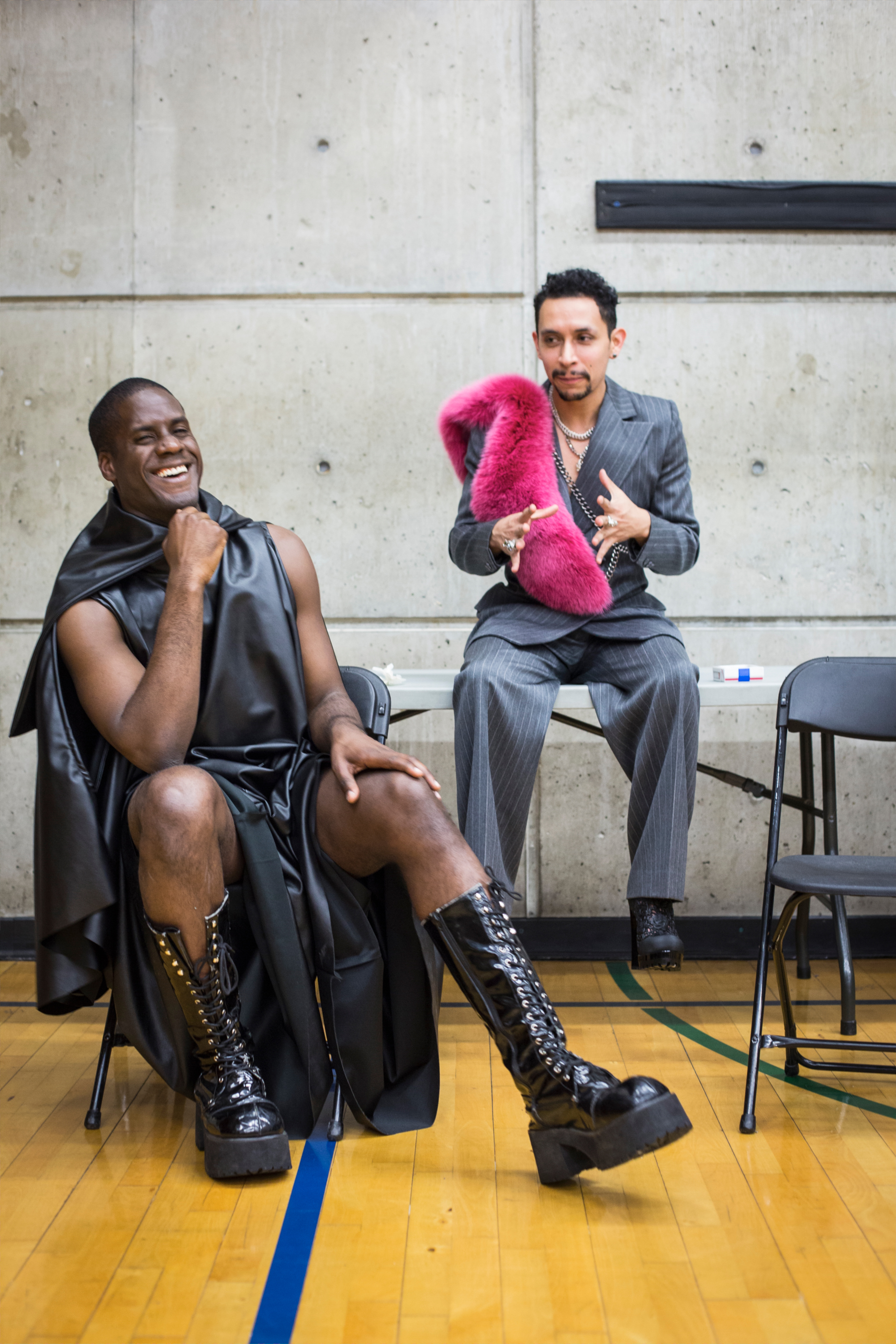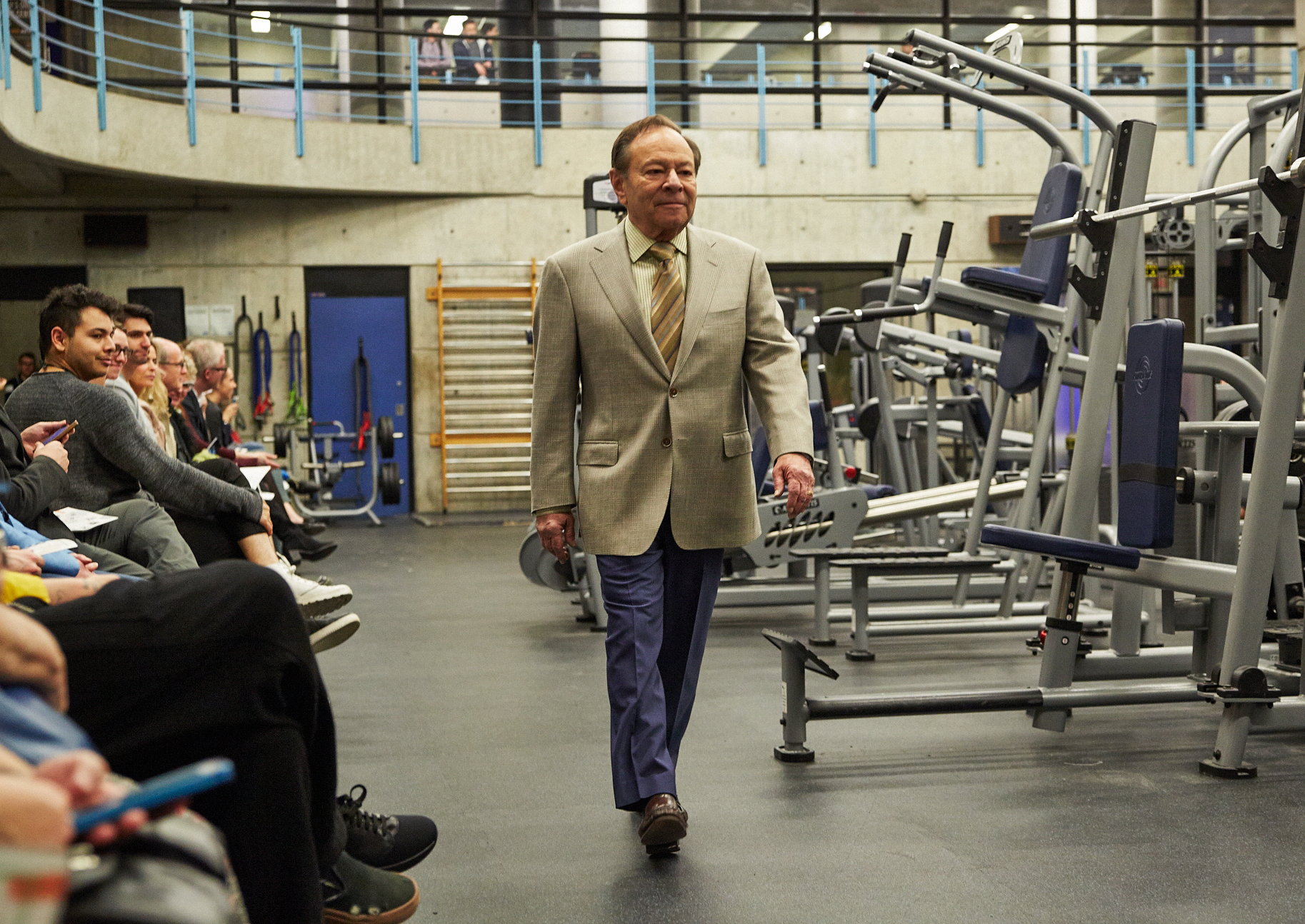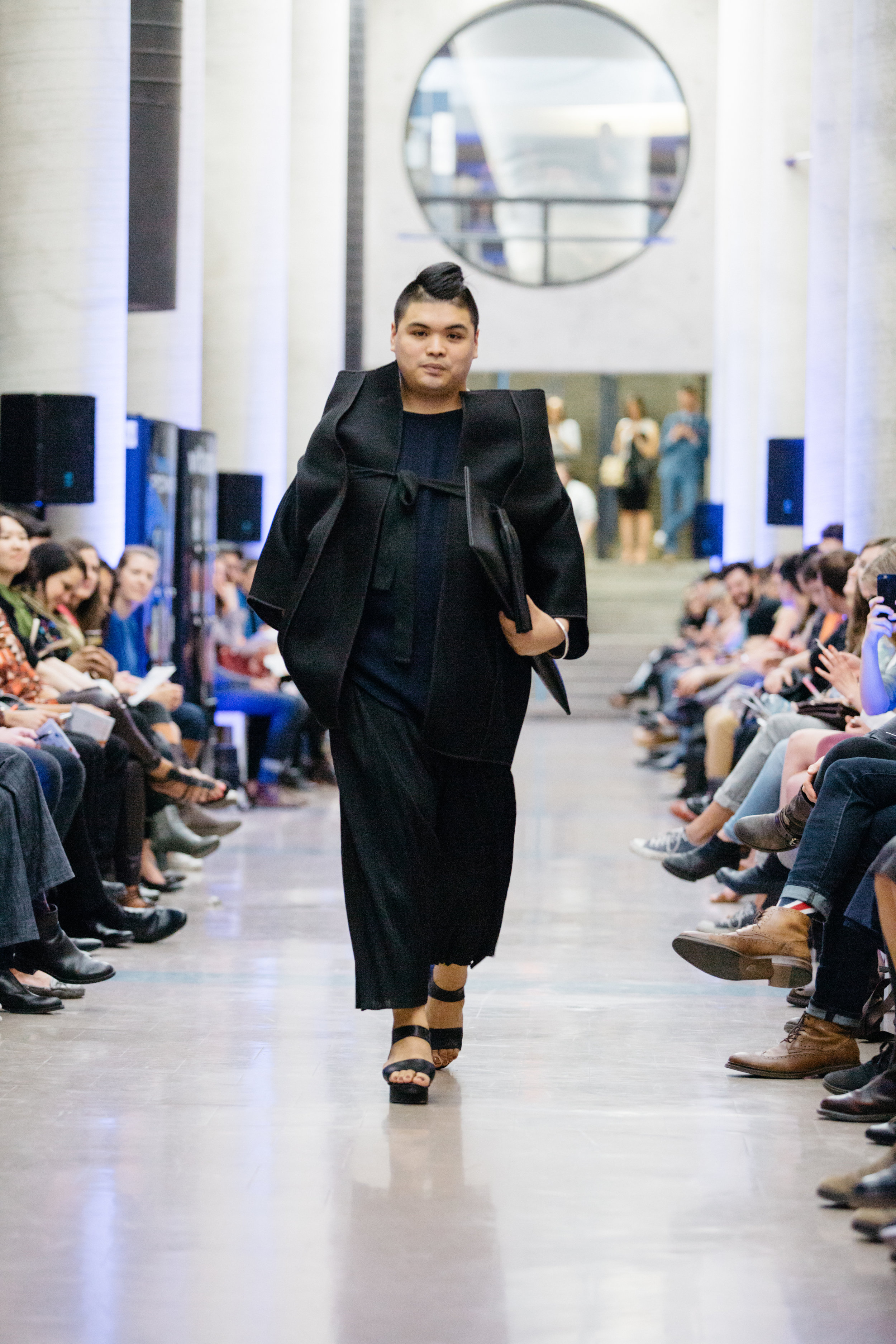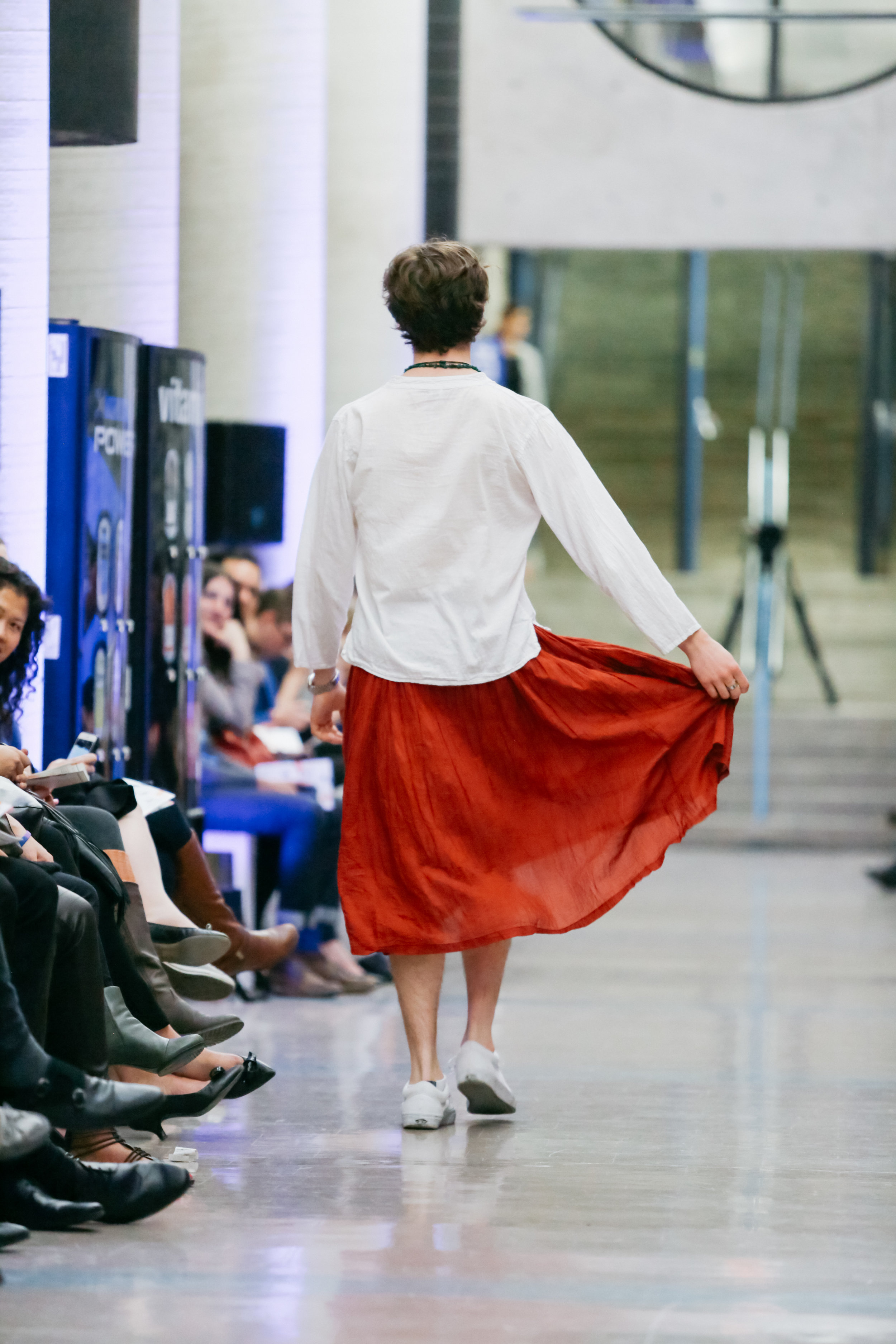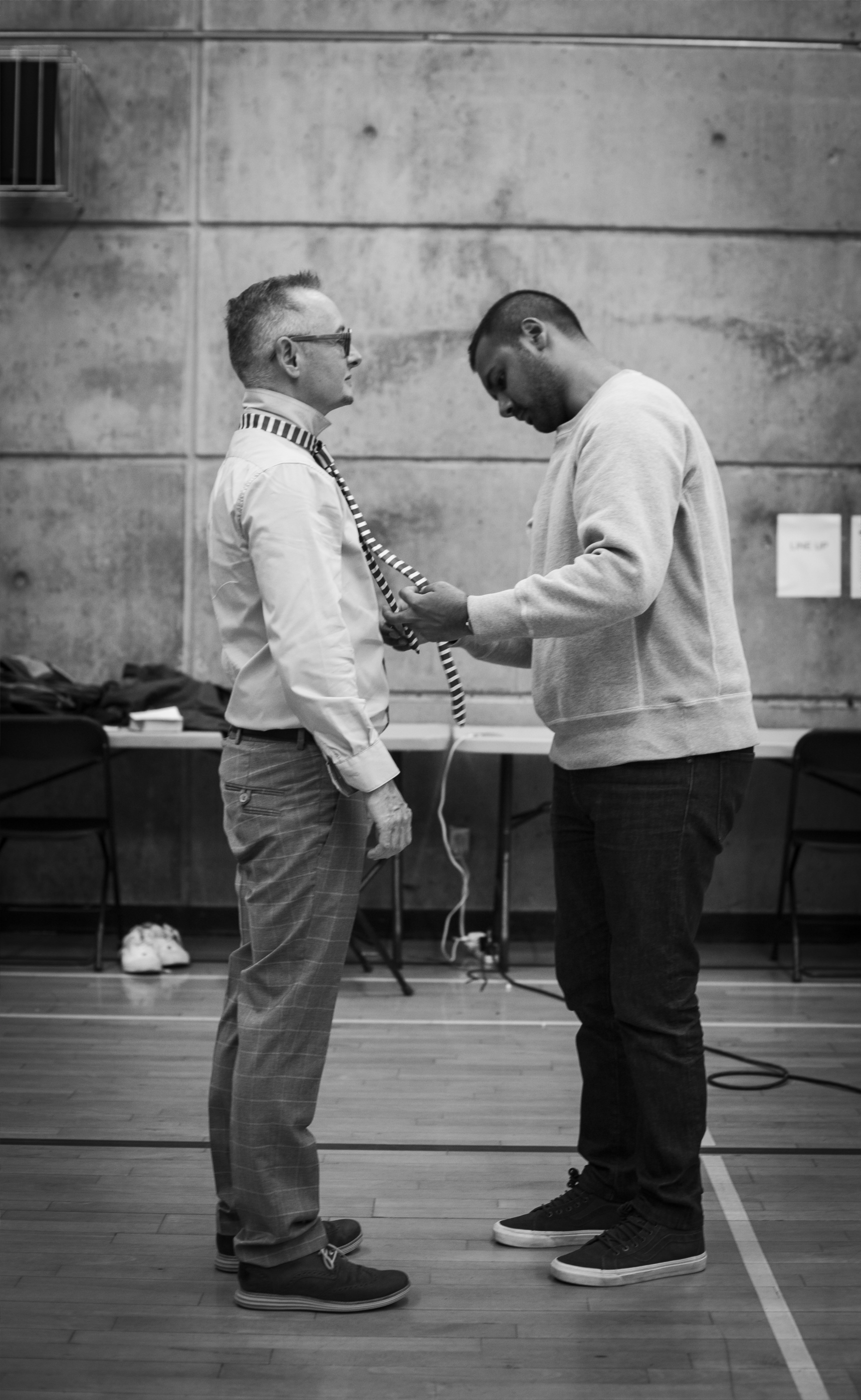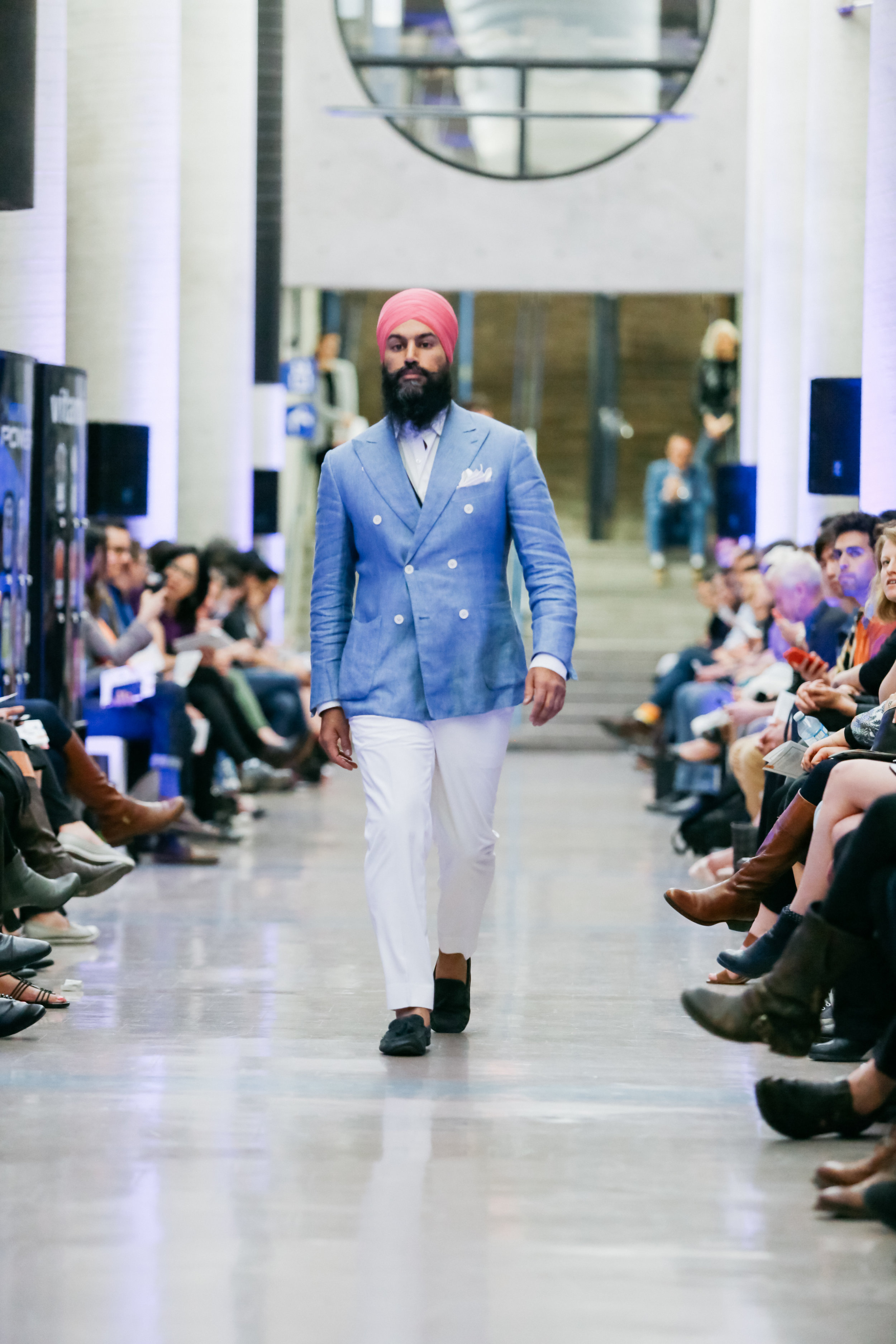Refashioning Masculinity
On May 5, 2016, twenty-four men strutted, swaggered and rolled through a weight room that was transformed into a runway. On either side of them—in-between exercise machines and weights—sat an audience of 400 people. While the audience watched a kaleidoscope of fabrics, silhouettes and colors pass by them, they heard the voices of the men who donned the clothing alongside those of sounds of Prince and David Bowie. Every ten minutes a “ding” notification alerted the audience to refresh their Instagram feeds as images of the men’s clothes lit up the screens of their phones. Unlike most fashion shows, the runway didn’t showcase the latest trends but instead the findings of my research study on men, masculinity and fashion.
As academics, we’re taught to share our research by writing articles and books. These tools of dissemination give our hard work credibility because publication only comes after passing a rigorous review process by other scholars. More recently, we’ve been encouraged to share our work through blog posts. Although absent of peer-review, blogs have been touted for reaching broad audiences. Their style avoids the dense language of traditional academic outputs and access to them isn’t trapped behind expensive paywalls. These tools focus on the written word and our words are the primary means by which they’re framed. But what does the written word leave out? Whose stories are lost in the process of academic writing?
By using the fashion show in research, I discovered a new method to share our work—a method which expands who knows and how we know in fashion studies and beyond.
The Project
For the past two years, I led a research project—Refashioning Masculinity—which explored men’s everyday dress practices. Because most research on men and fashion focuses on a narrow demographic of guys, I sampled for men across difference. My participants were between the ages of 18-to-92 and had a variety of body shapes, ethnic backgrounds, class positions, (dis)abilities and sexualities, as well as gender identities and expressions. I found these men by sending out requests to community and professional groups as well as to my network of contacts. I also stopped men on the subway and in coffee shops who had unique styles and represented demographics not yet included in the research. In total, fifty men took part.
Signing up for the project included participating in two phases. The first phase saw me hang out in the bedrooms of participants. We talked about their life histories, changing styles and experiences with fashion. They opened up their wardrobes and told me about the uses, memories and feelings that they attached to each garment. Phase two was a fashion show. The goal was to share the interview findings with the public by having the men model their clothes. All of the men had the option of whether or not to take part in the fashion show after their interviews. But just over half took to a runway. Many of them didn’t feel comfortable: after all, fashion and being on display are still associated with femininity and women in Western culture.
The Process
Putting on a fashion show is no small feat! It took a team of seven of us. This included my husband and Ryerson University co-faculty Daniel Drak, five students and one talented alumnus (shout out to Stephanie Rotz). The first task was to translate the interviews into a fashion show narrative. I used a standard qualitative research process and coded the transcripts to describe men’s understandings and performances of masculinities through fashion. As I organized my codes, I tried to develop a narrative that would be accessible to a general audience. The result was a chronology which took the audience on a journey from men’s decisions about what to wear to their experiences wearing them. There were four scenes about men and fashion: influences, motivations, experiences and disruptions. I then re-read the transcripts and connected each of the men’s stories and corresponding garments to the suitable scene.
The hardest part of this analysis was deciding which stories to include in the show. Those on the team with experience in theatre and event production suggested that our fashion show should not be longer than 45 minutes. Otherwise we’d lose the audience. This meant we had to cut down the 40 stories per participant to two! Through an iterative process—which was basically intense debates and lots of pizza—we selected four stories per participant. I then sent the stories to each participant and asked him whether or not he was uncomfortable sharing any of his stories publicly. After incorporating the men’s feedback, we debated some more and finally selected two stories per participant. These stories made up each of the show’s four scenes.
Because models don’t typically speak during fashion shows, we had to figure out how to share participants’ stories. Some stories were audio-recorded by participants and these recordings were played alongside the music. Other stories were live posted on Instagram with an image of the garment that the story referenced. Before the show, the audience was asked to download Instagram onto their phones and follow a specific account. They were also asked to refresh their feed whenever they heard a “ding” notification sound from the speakers. During the interviews, many participants told me that social media influenced their dress decisions. By integrating Instagram into the fashion show, I was able to creatively share this finding. It is this power of the fashion show—to share research in new ways—which makes it a valuable tool in our arsenal.
Beyond Words
No matter what words I select, I’m not able to fully capture men’s clothing choices. Because of the cultural baggage that genders fabrics, trims and styles of dress, I can’t write about men’s clothes without automatically associating them with masculinity and femininity. But many of my participants think about their clothes, styles or even themselves beyond a gender binary. Using language to share their clothing choices misrepresents their understandings. The fashion show, however, allowed me to present rich material examples of men’s conceptions of gender. The audience was not limited by the confines of my language. The fabrics, colors, styles and infinite combinations could speak for themselves rather than having me speak for them. This sensory knowledge is given academic value and a platform on which to be shared with others.
Words do not only limit the ways we describe clothes on hangers but also on bodies. Thanks to Joanne Entwistle, we also know there is a critical relationship between clothes and the body. What is missing in our understanding is that bodies, at least for most of our lives, are in motion. When I asked men why they liked or disliked certain clothes, they told me about how the garment felt as they moved. A pair of trousers was cut so slim that one participant couldn’t sit in them. But since he loved how these trousers looked on him, he wore them anyway; he just made sure to avoid any activities which involved sitting! Words couldn’t fully capture how this man walked in his pants, a combination of confidence and confinement. But the fashion show was a dynamic platform where the audience could see clothes on the moving bodies of their wearers.
Academic writing can have the downfall of telling its audience what to think instead of letting them form their own opinions. Because a fashion show is created by a diversity of artistic, sensory choices, it can inspire people to reflect on issues for themselves. How does the music make your feel? What comes to mind as you walk through the fashion show venue? I selected the weight room in my university’s athletic center as the runway. Rather than move the weights, I positioned the chairs around them to create the runway path. The weight room allowed me to take an archetypal masculine space where men literally construct power onto their bodies and juxtapose it with the feminized activity of fashion. By blurring boundaries between dominant ideas of masculinity and femininity, I hoped to encourage guests to question gender norms.
Engaging Communities
What I loved the most about the fashion show was that it enabled participants to co-author the dissemination of their stories. Most fashion designers and academics share something in common: they create based on their own ideas. Consumers or participants have no say in the final garment or analysis of the article. In creating the fashion show, I wanted to remove participants from this subordinate position. The men selected clothes from their wardrobes, coordinated their outfits and styled their appearance. They directed their runway performances: I asked them to express their personalities through their movements and gestures. In this way, the fashion show created a space for to the men to tell their stories in, on and through their bodies.
Participants also helped co-create the fashion show. We hosted a workshop where some of the men brainstormed, debated and discussed the ways we could share the interview findings through the fashion show. In one activity, participants listened to a story from each of the four fashion show scenes. They were then asked to write down how they would share that story using various creative elements (i.e., video, audio, lighting). After they wrote down their own ideas, they shared them with the group. We then discussed and expanded on all of the ideas. By co-creating the fashion show with participants, I challenged the dominant practice—whether in fashion or academia—of giving those who make our work possible no control in the final output.
The fashion show also engaged a diverse audience. We didn’t charge a fee for admission but guests were asked to register online. This data showed that our audience included the fashion industry, media and public. Throughout the show, they were encouraged to share their photos on social media and use the hashtag #RefashioningMasculinity. The hashtag trended on Twitter for the entire show. And these posts shared the project with even more people! When I asked guests why they attended, many said they wanted to see a fashion show. It was exciting! I was able to leverage the fashion show’s associations with glamour and spectacle to attract audiences who might not engage in academic research. Once in their seats, I could subvert their expectations.
Empowering Difference
What I loved most about the fashion show was that such a diverse group of participants took part. I expected men who embodied counter-cultural masculinities to participate. But I was surprised that men who embodied more dominant ideas of masculinity excitedly agreed too. Because these men have the most vested in current cultural ideas of masculinity, they also have the most to lose. Watching a man in a flowing skirt take to the runway behind a man in a Tommy Bahama shirt ruptured not only masculine norms, but the masculine hierarchy that positions feminized, racialized and other marginalized men below white, straight, able-bodied men. On the same runway, all of these men were equally celebrated as masculine.
How did I get such a diverse group of men to participate? I put myself on the line. Rather than sit back in the security of my role as a researcher, I connected with the participants by sharing my own experiences with fashion and masculinity. Opening myself up and being vulnerable allowed me to demonstrate to participants that I was personally committed to advancing the issues that the project addressed. When some of the men told me that they were nervous about being in the fashion show, I decided that I would take to the runway too and share my own sartorial biography. Being on a runway was terrifying! I’d never been on display before, but it helped me empathize and support my participants throughout the process.
Ultimately, featuring diverse men in their own clothes performed a critical commentary of the fashion show. Fashion primarily represents white, young, tall, toned, cis-gendered and able-bodied men on the runway. Similarly, most mainstream, fashionable menswear is influenced by masculine archetypes—sports, military and business—which connote rationality and power. Through their diverse embodiments and expressions, my participants talked back to the fashion industry and its coronation of trends. They disrupted the fashion industry’s singular narrative about masculinity through the celebration of their own sartorial and physical diversity.
Inclusive Knowing
It has now been four months since the show took place. I’ve submitted an academic article about it, am in the midst of writing a book on the project and just published this piece. All of these more traditional academic vehicles are valuable: articles, books and blogs share my work globally and in perpetuity. The fashion show cannot do that. But the fashion show allowed men to author their own stories through their dressed bodies. And it was the impact that the fashion show had on them—my co-authors—which no writing can match. This impact is best summed up by an email I received from one of the 72-year old participants:
“In yiddish there is the word "nachos" or being proud, not pride, but proud. I am proud of being chosen, proud of finding the time to walk the runway and proud of when my family applauded and I felt that it was like the first time I was in a play at school and everyone applauded. This is more than a “demonstration of confidence,” it is a display of self-assuredness as if to say to the world I have never done this before, but I did it now and you can't take that away from me. Thank you very much for allowing me to experience a moment of 'nachos'.”
Having participants feel proud for sharing their stories is what a fashion show in research is about, for their stories introduce an array of knowledge which is lived, sensory and embodied. These stories expand ideas about who knows and how we know, making a more inclusive world.
Acknowledgements
Refashioning Masculinity was funded by the Social Sciences and Humanities Research Council of Canada and the Faculty of Communication and Design at Ryerson University.
(All images courtesy Lawrence Cortez and Brody White.)

